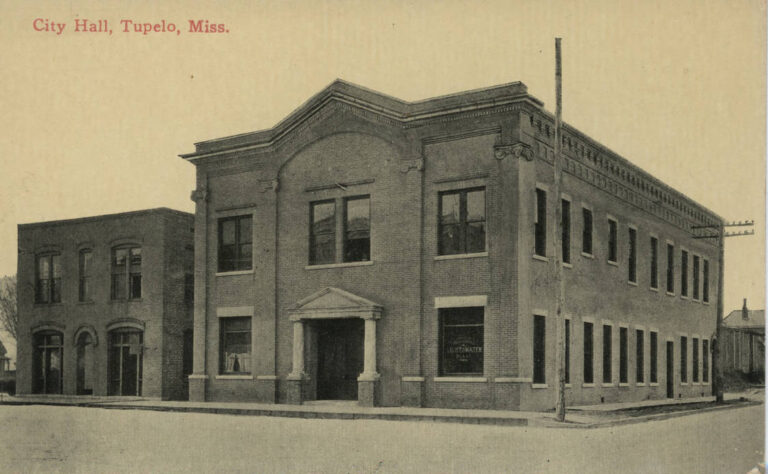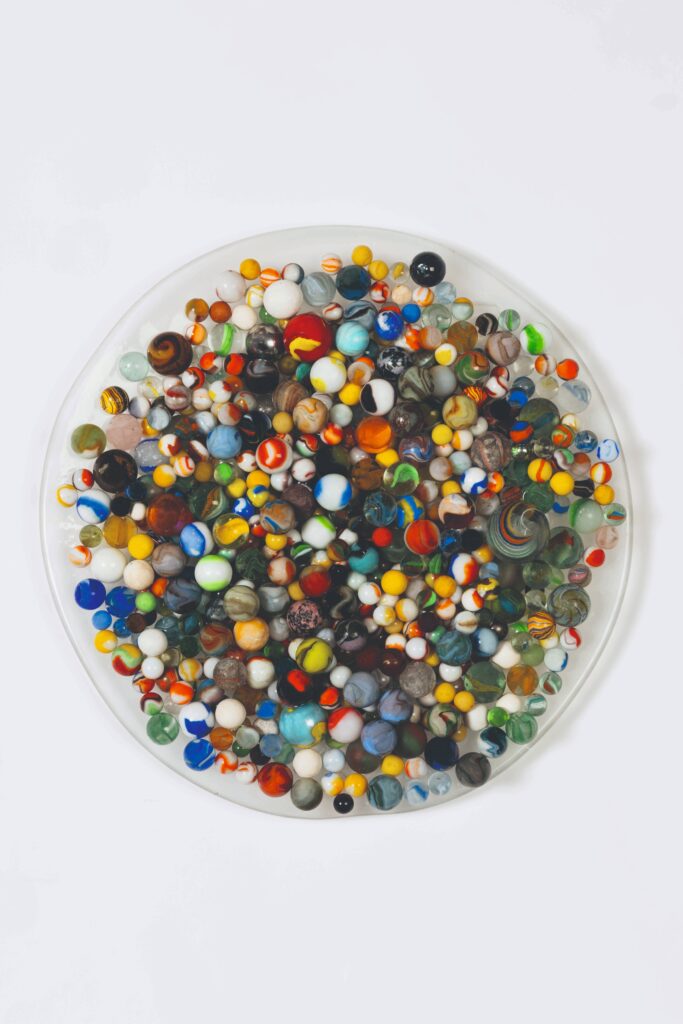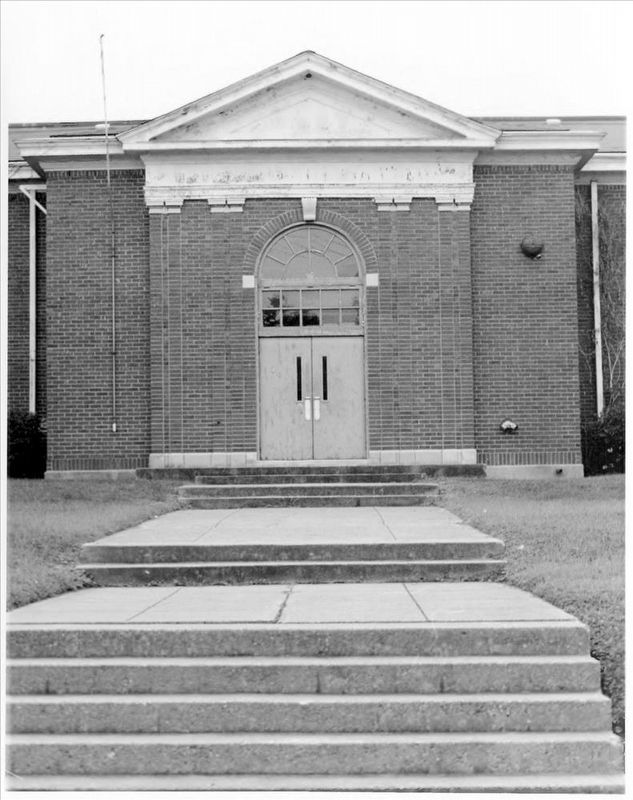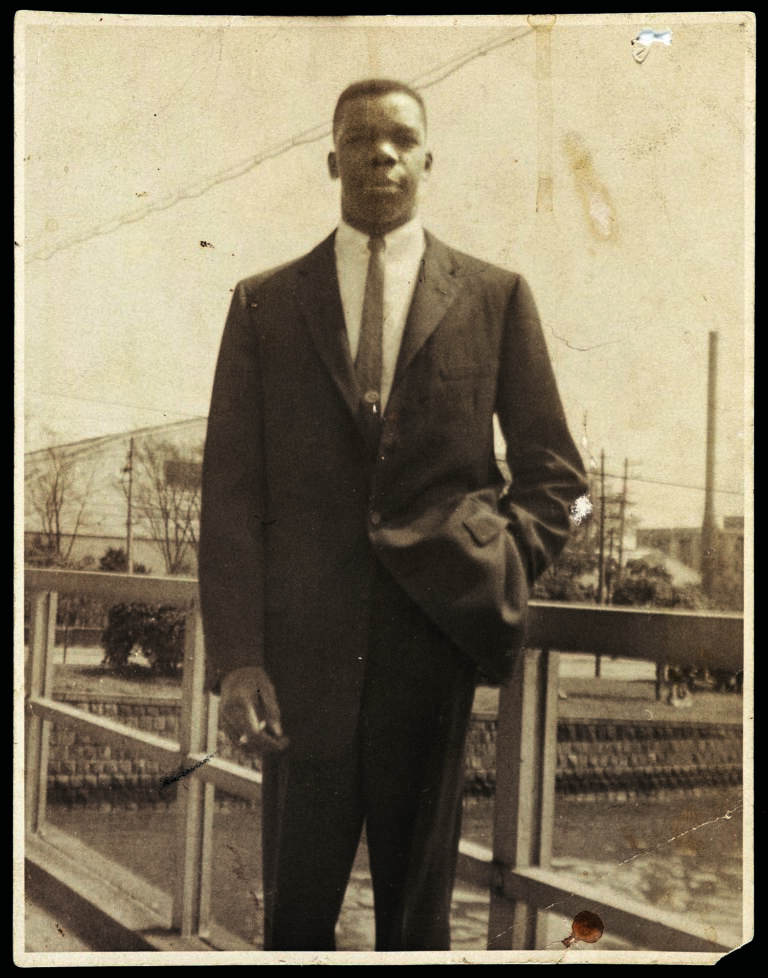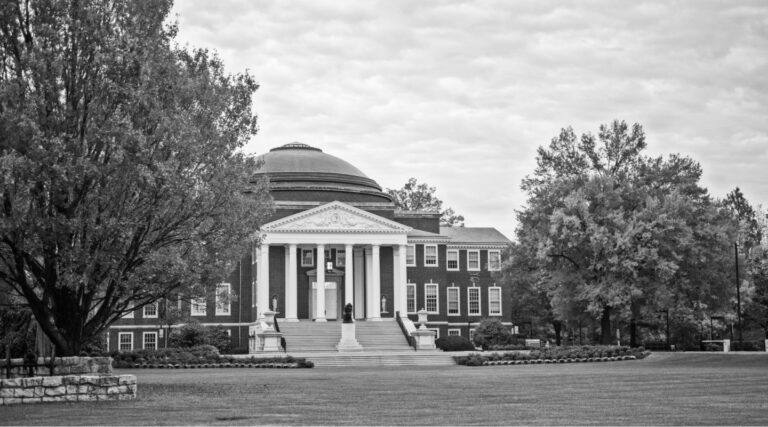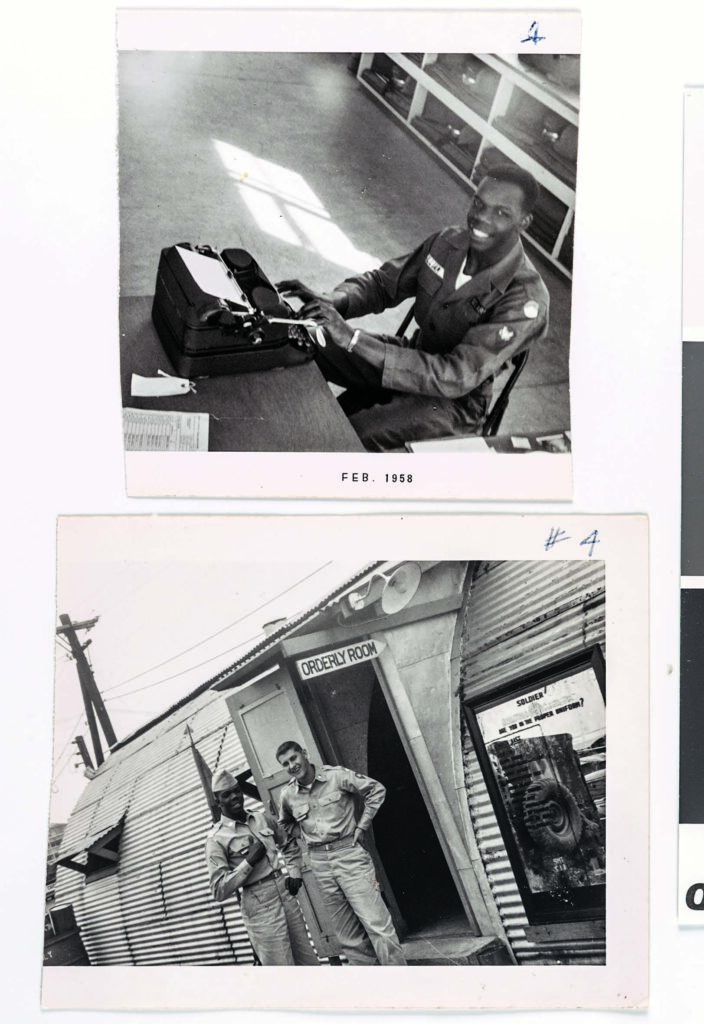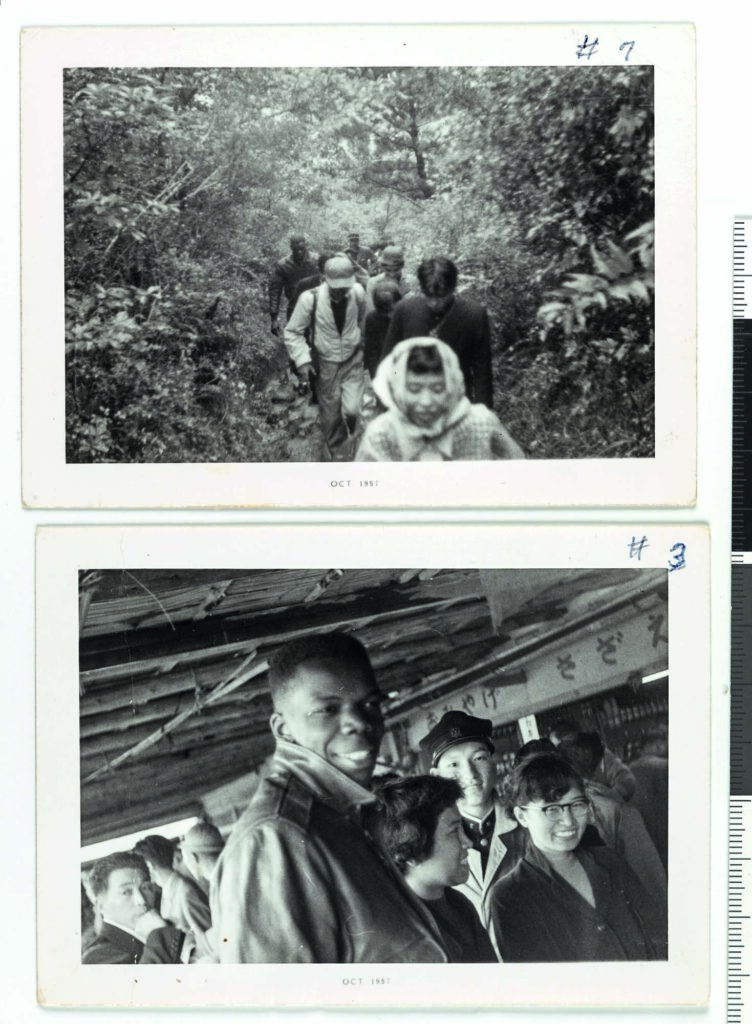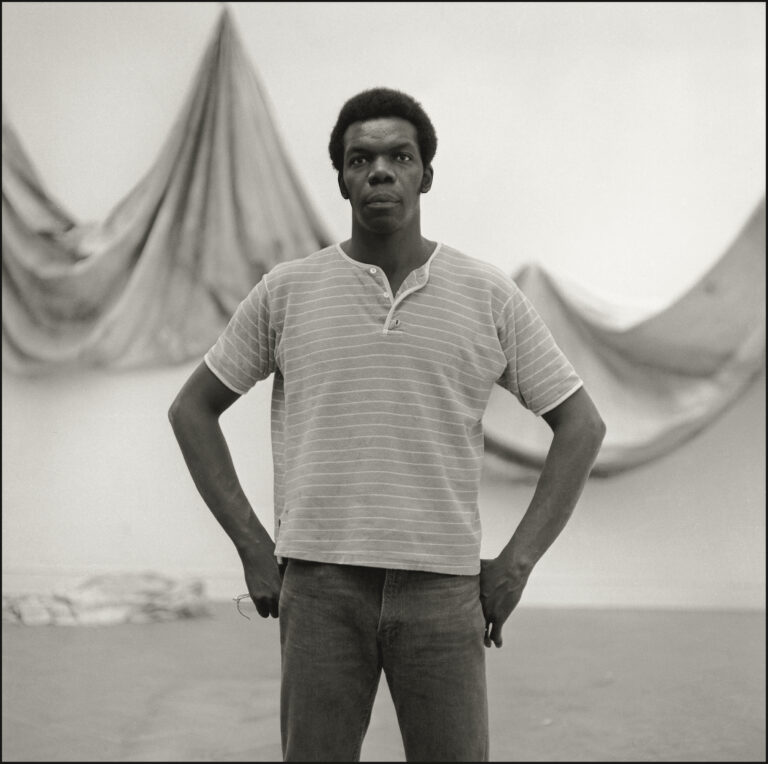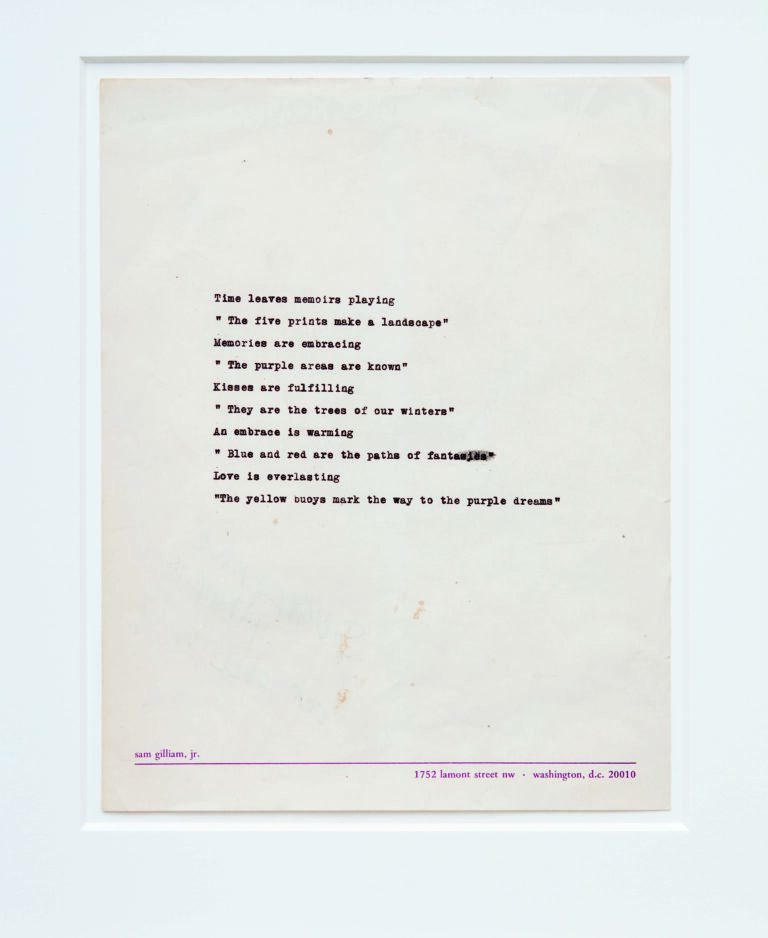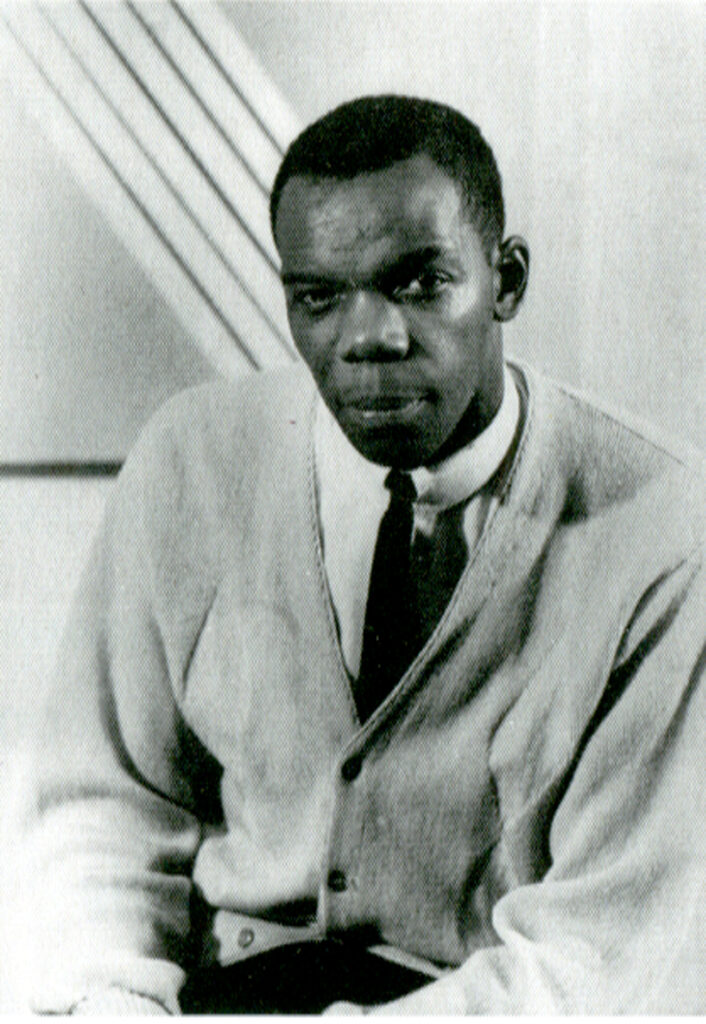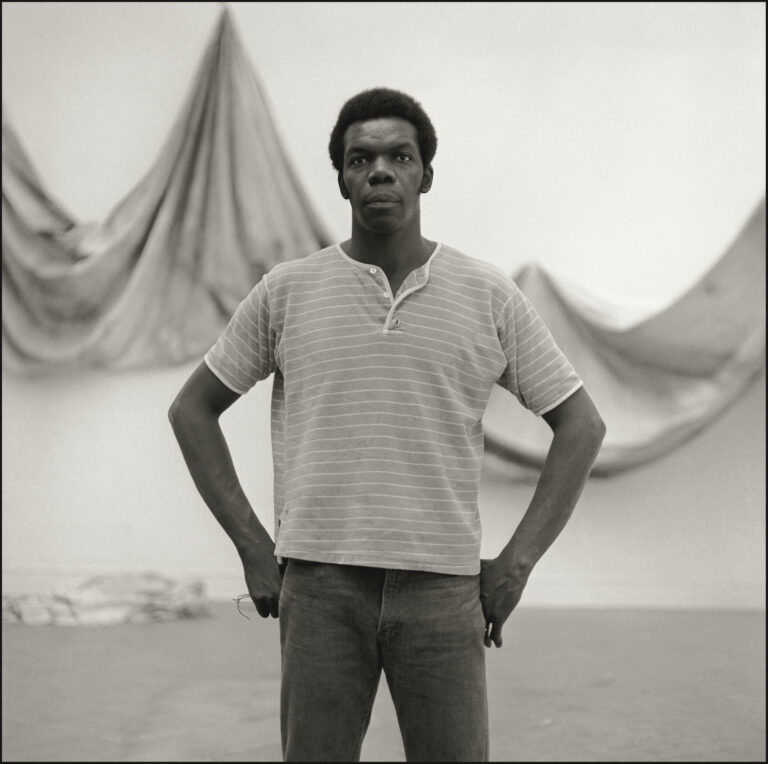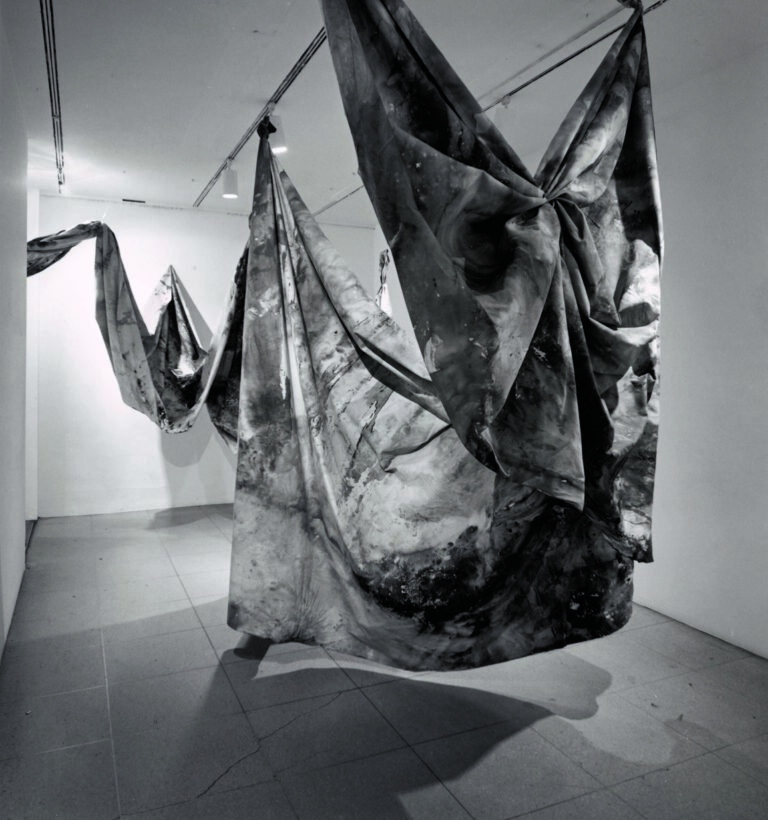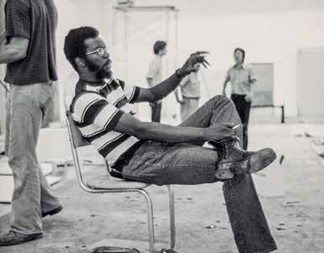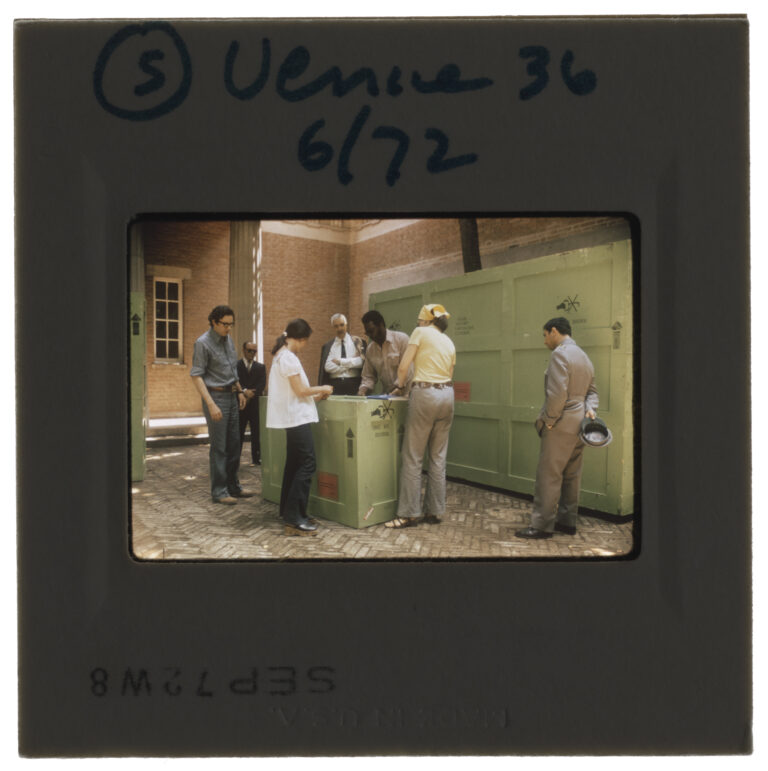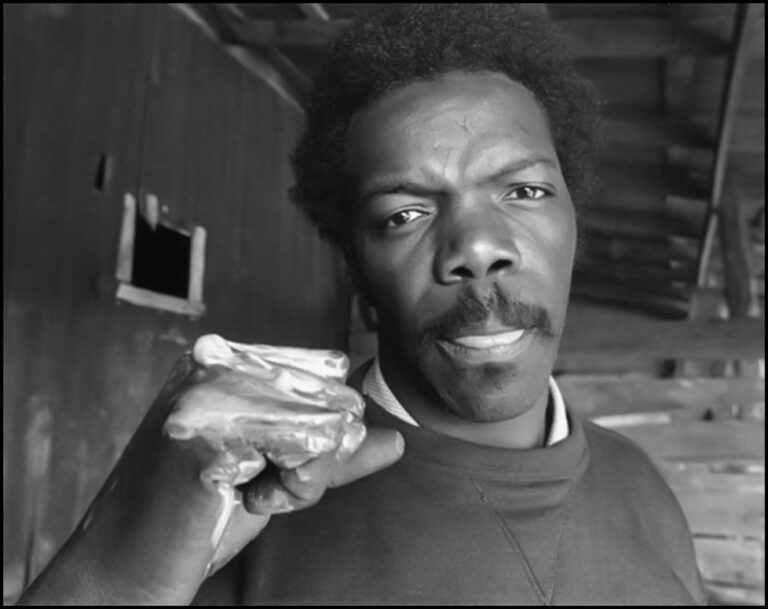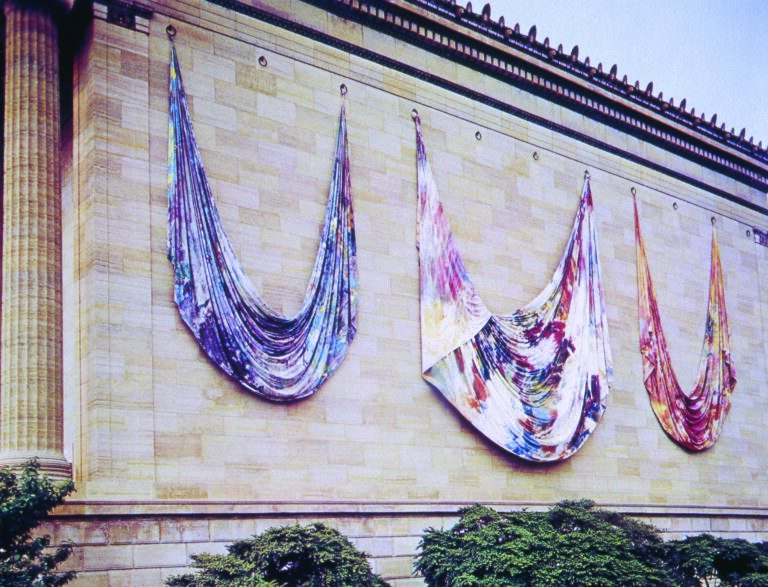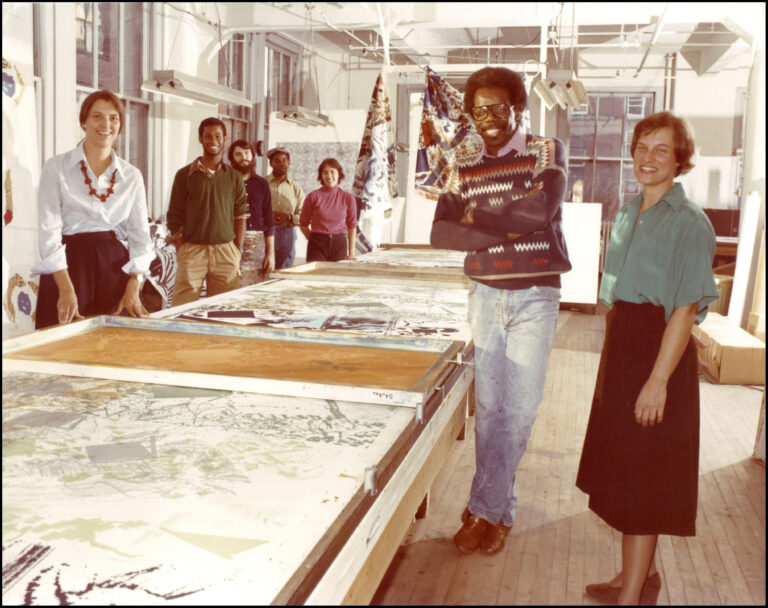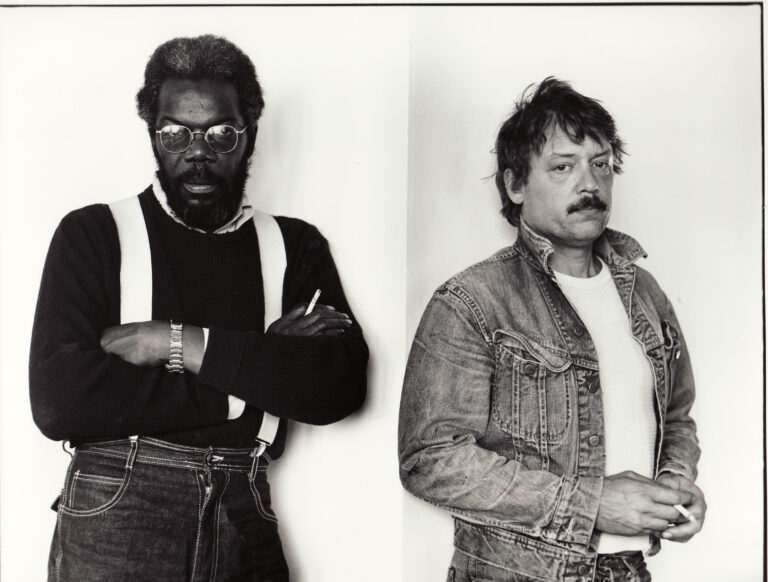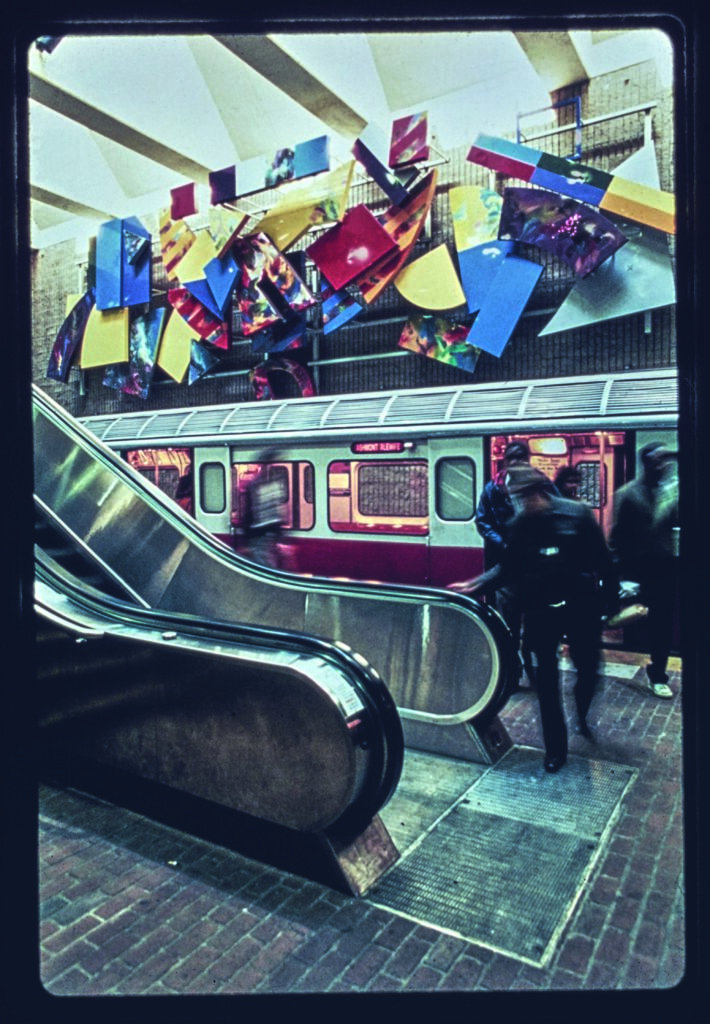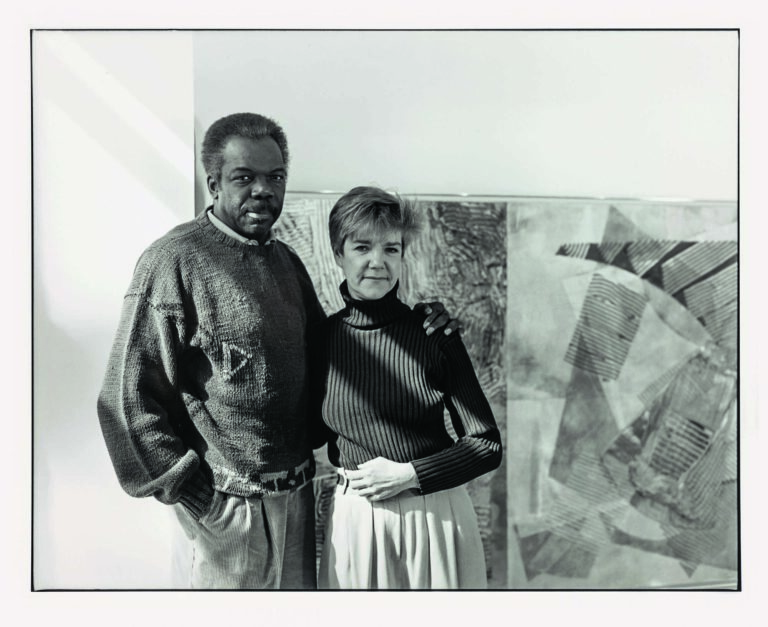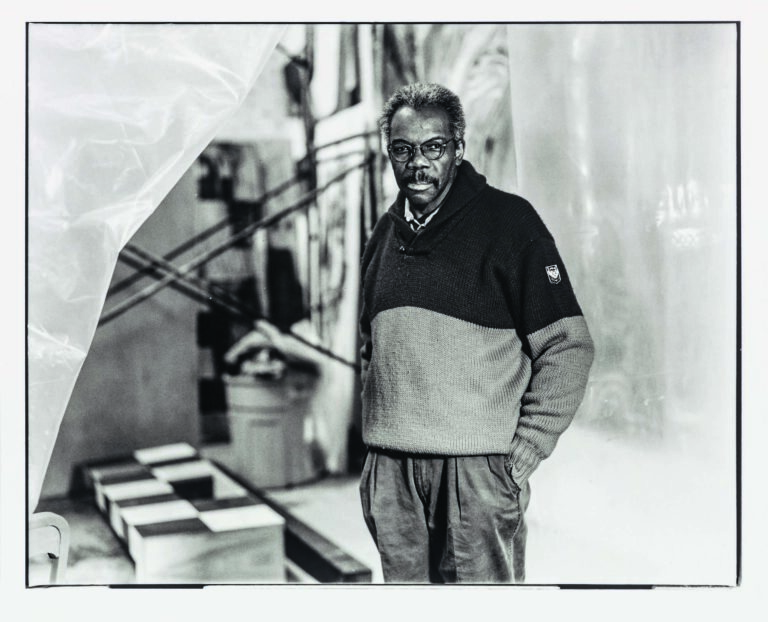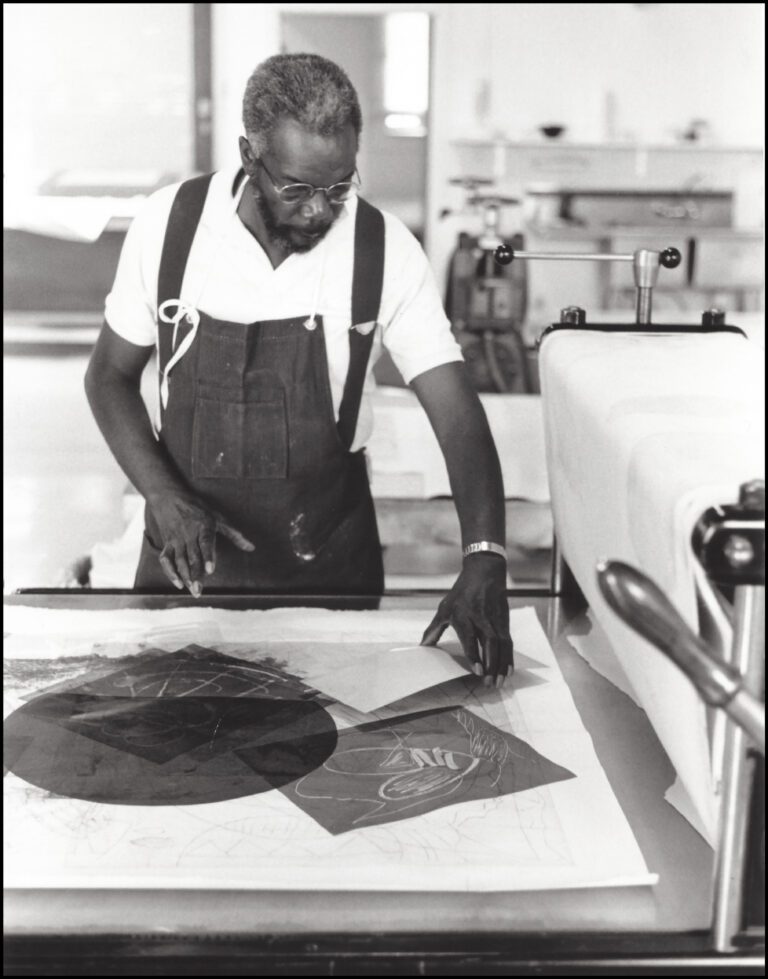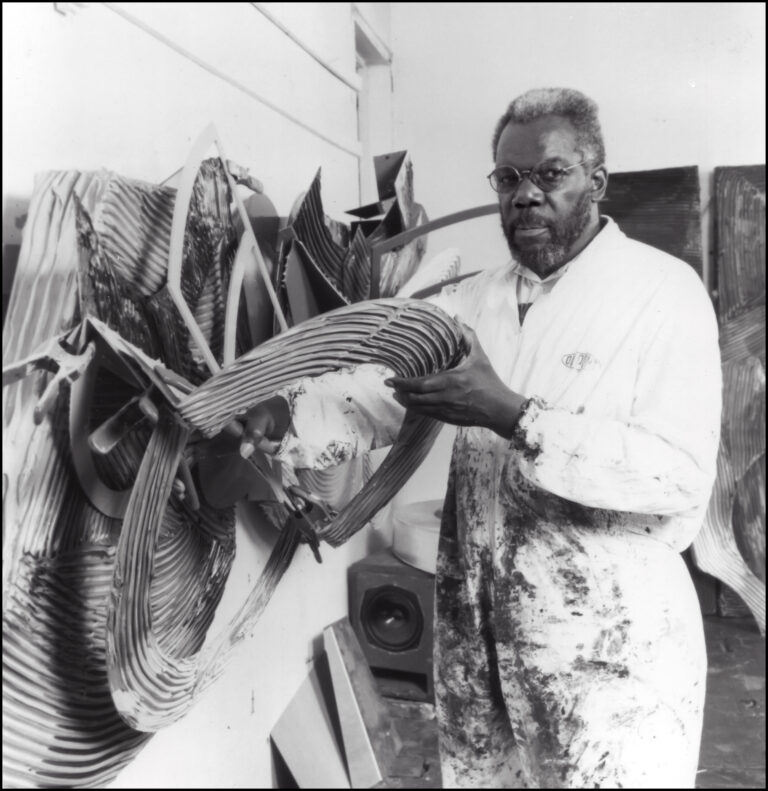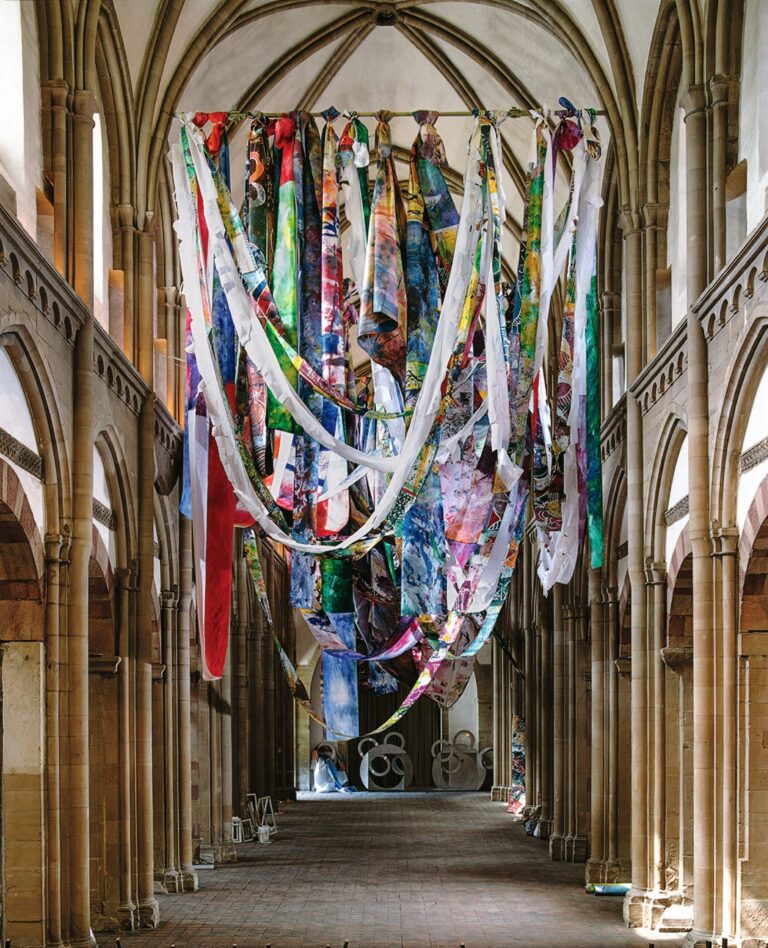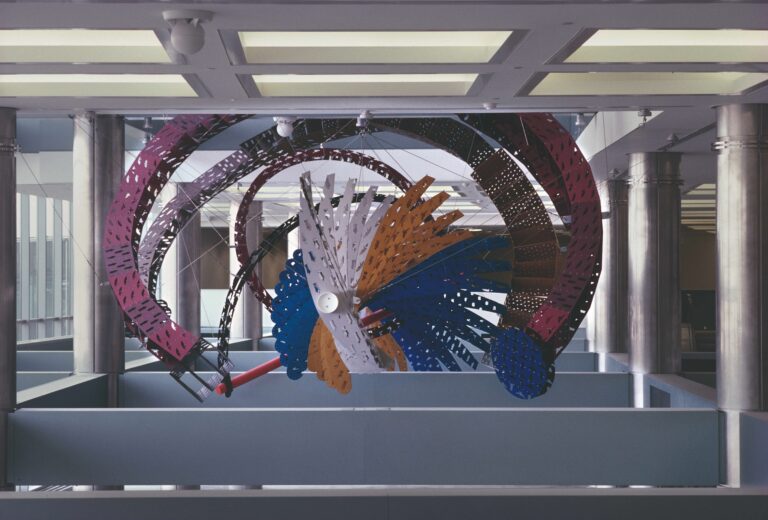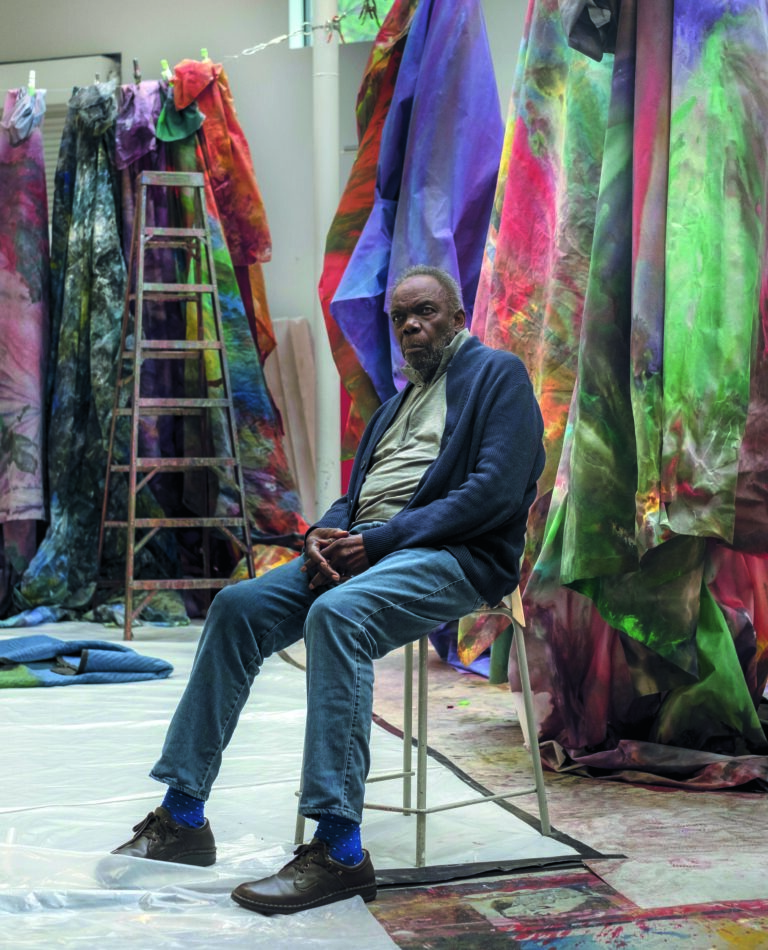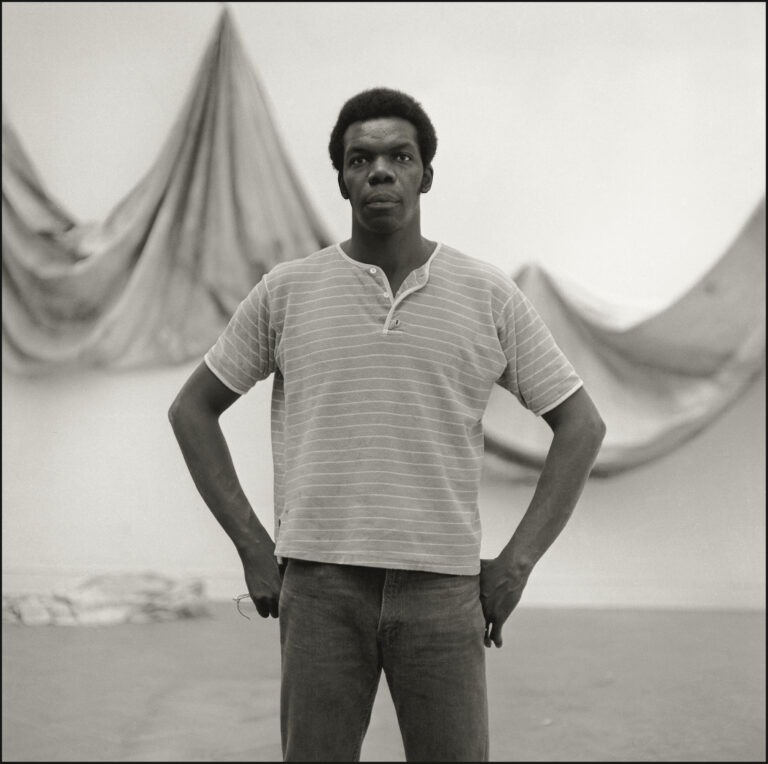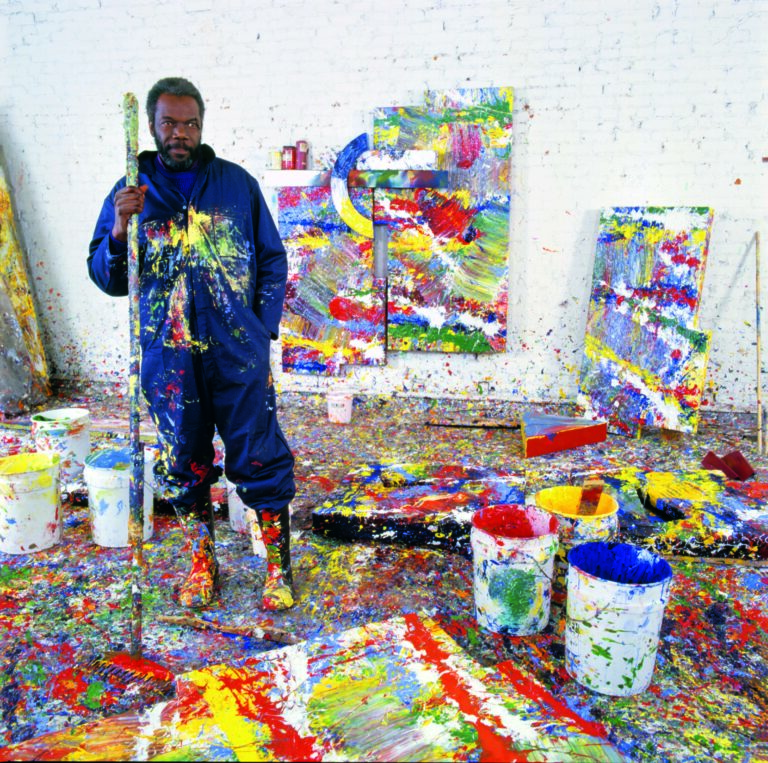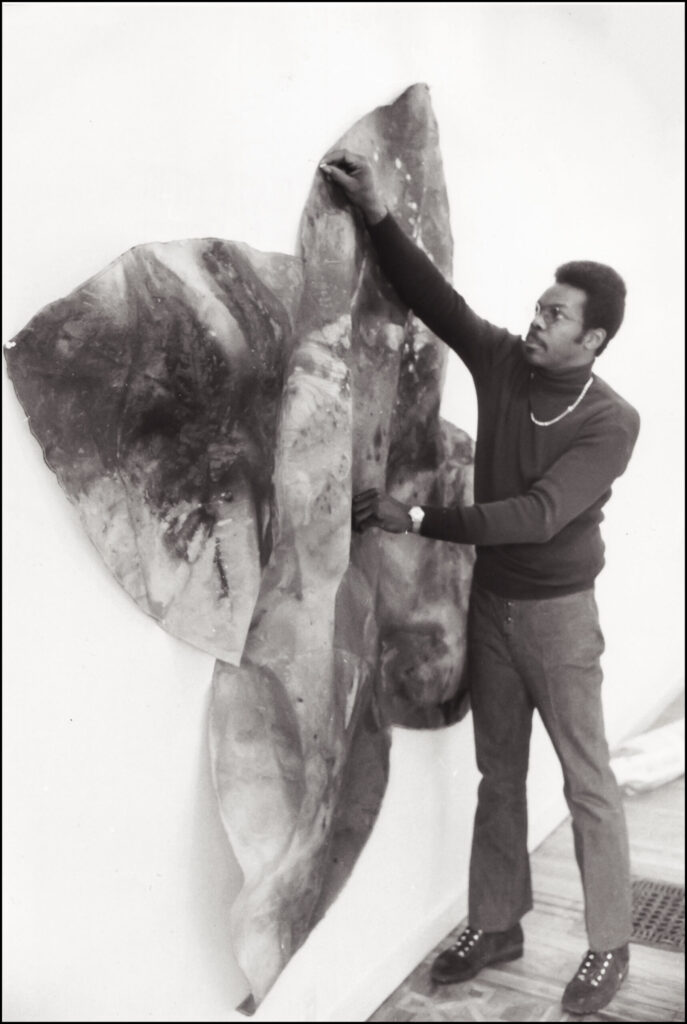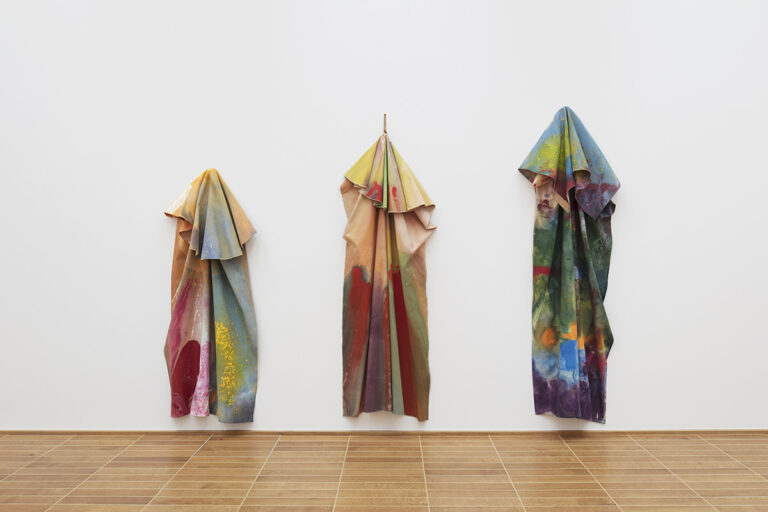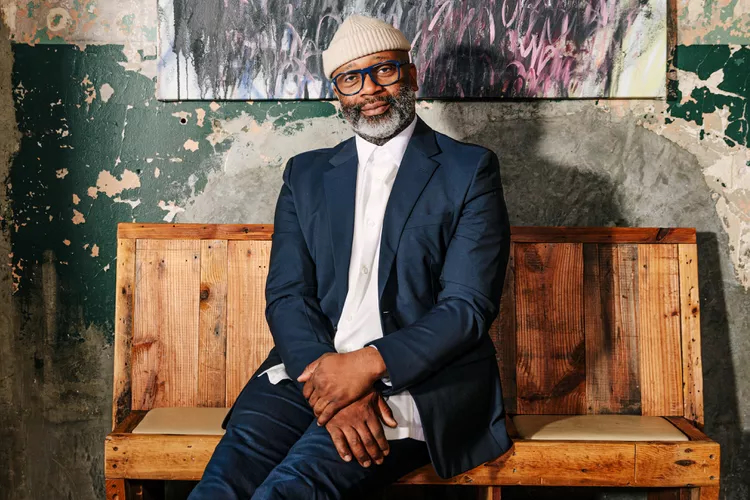About Sam Gilliam
Throughout his life and career, Sam Gilliam pushed the boundaries of abstraction by consistently inventing forms and incorporating new materials into his work. In the 1960s, Gilliam established himself as a pioneer of abstract art when he freed the canvas from the constraints of the wooden stretcher, forever changing the trajectory of painting. His iconic Drape paintings, which he continued to iterate over the course of his life, blur the boundaries between painting, sculpture and architecture and emphasize the experience and possibilities of painting.
Gilliam is widely revered as a brilliant colorist who used vibrant tones in compelling new ways, and is lauded as an expansive member of the Washington Color School. His work is often considered an evolution of Abstract Expressionism, alongside notable artists such as Jackson Pollock and Kenneth Noland, and is recognized for his revolutionary use of color as a means to create structure on the canvas and for his understanding of paint as a sculptural material.
For Gilliam, artmaking was inherently political. During the tumultuous decades of the sixties and seventies, when many artists turned to figurative works to address social issues,
Gilliam remained committed to abstraction, which allowed his work to be interpreted in myriad ways. While his influences were as wide-ranging as European modernism, jazz, constructivism, and renaissance painting, he simultaneously advanced appreciation of the work of Black artists on his own terms and, in 1972, was the first African American artist to represent the United States in a solo presentation at the Venice Biennale.
Gilliam was included in the Venice Biennale for a second time in 2017, and was the subject of solo exhibitions at The Museum of Modern Art, New York (1971), The Studio Museum in Harlem, New York (1982), J.B. Speed Memorial Museum, Louisville, Kentucky (1996), Kunstmuseum Basel, Switzerland (2018), and the Hirshhorn Museum and Sculpture Garden (2022). Gilliam received the U.S. State Department’s Medal of Arts in 2015 for his cultural diplomacy, as well as honorary doctorates from eight universities. He was elected into the American Academy of Arts and Sciences in 2022. In addition to his countless professional accolades, Gilliam maintained an active relationship with young artists and curators through his work as a teacher and his openness to art practitioners and scholars visiting his studio.
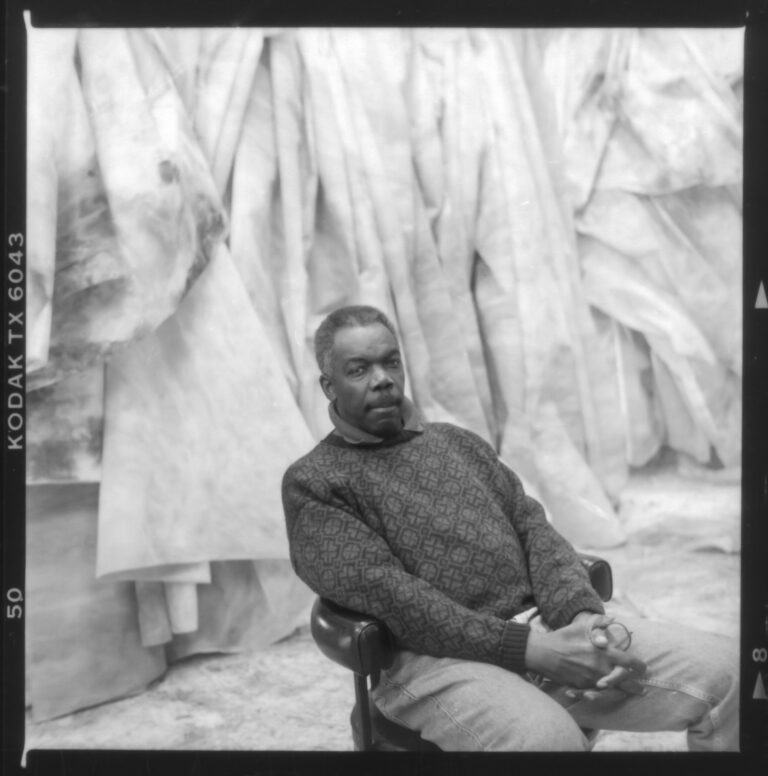

Explore pivotal moments in Gilliam’s life
1930
Sam Gilliam is born on Thanksgiving Day in Tupelo, Mississippi. He is the seventh of eight children of Sam and Estery Gilliam. Sam Sr. is a carpenter, while Estery is the primary caregiver for the large family.
1940
The Gilliam family moves to Louisville, Kentucky, when Sam is seven years old. He attends segregated schools until college. At Virginia Avenue Elementary School his creativity and artistic interests are encouraged and supported by both his teachers and parents. Sam attends a junior high school with a special art program, but in tenth grade he transitions to Central High School, which is without a dedicated art program. Nonetheless, Gilliam will continually reflect on the support he received from his teachers for his interest in art throughout his time in school.
1950
Gilliam graduates from high school and begins studies at the University of Louisville. It is one of the first southern universities to be desegregated in 1950 and 1951. Gilliam is a member of the second admitted class of Black undergraduate students.
Gilliam begins a relationship with Dorothy Butler, a Louisville native who is studying at Lincoln University in Jefferson City, Missouri.
Gilliam graduates from the University of Louisville, Kentucky, with a BA in Creative Arts. His first solo exhibition as a student takes place at the University of Kentucky’s Frame House Gallery, where he presents a selection of paintings of single abstracted figures walking in the landscape, which he refers to as images of Dorothy Butler walking.
1960
In 1962, Gilliam and Butler are married on September 1. Together they move to Washington, D.C. after Butler is offered a position as reporter on the City Desk at the Washington Post, becoming the first Black female reporter at the newspaper.
Gilliam begins teaching at McKinley Technical High School, an art-focused public school where he will teach until 1967.
1970
In 1970, Gilliam presents his work in Europe for the first time, at Galerie Darthea Speyer, who will represent the artist in Paris for over three decades, until 2007. His work is also included in several exhibitions surveying the Washington Color School at institutions throughout the US and Canada, in which he is identified as part of a second generation of artists influenced by the work of Morris Louis, Helen Frankenthaler and Kenneth Noland, among others. In several of these exhibitions, including the influential ‘Ten Washington Artists’, he is the only Black artists to be invited.
Gilliam is an artist-in-residence at Oberlin College in March. He later gifts the Allen Memorial Art Museum a significant Drape painting, Softly Still (1973).
Gilliam serves on a six-person jury for the National Council on the Arts fellowship awards for twenty young painters and sculptors of ‘exceptional talent’, together with William Seitz, director of the Rose Art Museum at Brandeis University; James Speyer, curator of contemporary art at the Art Institute of Chicago; James Melchert, artist and teacher at the University of California at Berkeley; Vanderen Coke, a historian of art and photography at the University of New Mexico; James Camp, an art historian at the University of South Florida.
In 1975, Gilliam exhibits his first outdoor installation of large- scale Drape paintings, Seahorses, presented on the façade of the Philadelphia Museum of Art as part of the summer Philadelphia Festival, organized by the Greater Philadelphia Cultural Alliance. The paintings are installed the following summer at the Brooklyn Museum.
Gilliam makes Three Panels for Mr. Robeson (1975), named in honour of the Civil Rights activist, actor and singer Paul Robeson, who is also the subject of Dorothy Gilliam’s 1976 biography, Paul Roberson: All American. The three-panel painting is considered a masterwork of Gilliam’s suspended canvases. The piece is first presented in the Corcoran Gallery of Art’s 34th Biennial of Contemporary American Painting.
Gilliam becomes an early board member of the Washington Project of the Arts, along with William Christenberry, Tom Green, E. Ethelbert Miller, Robert Rauschenberg, Renée Stout and Maida Withers.
Gilliam is the inaugural artist-in residence at the Brandywine Workshop in Philadelphia. He will become a longstanding supporter of the workshop and will return several times to make prints.
Gilliam receives a Distinguished Alumni Award from the College of Arts and Sciences, University of Louisville.
In 1978, Gilliam’s survey exhibition, ‘Indoor & Outdoor Paintings 1967–1978’, at the University Gallery, University of Massachusetts, Amherst, is accompanied by the artist’s first major exhibition monograph, featuring texts by Hugh Marlais Davies and Jay Martin Kloner. The show features four outdoor paintings, including Circular Place Reflection (1978), commissioned by the University Gallery and installed on its exterior wall.
In 1979, the US General Services Administration (GSA) commissions Triple Variants, an artwork comprised of a large unstretched canvas, an aluminium beam and two large stones, installed on the 23rd-floor lobby of Richard B. Russell Federal Building and US Courthouse in Atlanta.
Gilliam is an artist in residence at Vermillion Editions Ltd, in Minneapolis, Minnesota, where he completes a series of monoprints, Coffee Thyme, with master printer Steve Anderson. He will return several times to work with the print studio in Minneapolis.
1980
Gilliam receives an Honorary Doctorate of Humane Letters from his alma mater, the University of Louisville. He is also named Visiting Distinguished Louis D. Beaumont Professor of Art, School of Fine Arts, Washington University in St Louis.
The GSA commissions another work for its collection, Box Cars Grand, which is installed in the lobby of the federal building in Detroit.
Gilliam’s work is included in the influential exhibition, ‘Afro-American Abstraction’, curated by April Kingsley and organized by P.S. 1 Contemporary Art Center, which travels to nine institutions throughout the US. Featuring works by nineteen artists, including Ellsworth Ausby, Barbara Chase-Riboud, Edward Clark, Houston Conwill, Melvin Edwards, Sam Gilliam, David Hammons, Maren Hassinger, Richard Hunt, Jamillah Jennings, James Little, Alvin Loving, Tyrone Mitchell, Senga Nengudi, Howardena Pindell, Martin Puryear, Charles Searles, Jack Whitten and William T. Williams, the exhibition offers a counter-argument to Greenbergian formalism through an exploration of the relationship between African art and culture and abstract art created by Black artists in the United States.
1990
Entering the 1990s, Gilliam has retired from teaching and his three children grown and out of the house. Having just received an NEA grant, for the first time, Gilliam works full-time as an artist, continuing to experiment with printmaking and developing large-scale public commissions.
In 1990, he creates a large-scale print, Of Fireflies and Ferris Wheels (c. 1990), which exhibits internationally throughout the decade. He unveils several major large-scale commissions, including Jamaica Center Station Riders, Blue (1990), at the Jamaica Center train station in Queens, NY and Dihedral, which opens at LaGuardia Airport in Queens, NY, in 1996.
Gilliam also mounts solo museum exhibitions during the 90s, including Sam Gilliam at the American Craft Museum in New York (1991); Sam Gilliam: Construction at the Speed Art Museum (fka J.B. Speed Memorial Museum) in Louisville (1996), and Sam Gilliam in 3-D’, Kreeger Museum in Washington D.C., his first solo museum exhibition in D.C. since 1983.
2000
In 2001, Gilliam is inducted into the National Academy Of Design. In 2002, Gilliam collaborates with the Washington Ballet’s artistic director Septime Webre to create a complex suspended scenography for the company’s production, Journey Home, which is performed at the Kennedy Center and later tours.
In 2005, A major US touring retrospective exhibition is organized by the Corcoran Gallery of Art, curated by Jonathan Binstock, its Curator of Contemporary Art. The exhibition is accompanied by a significant scholarly catalogue and reintroduces audiences to the breadth of Gilliam’s practice over five decades.
In 2006, Gilliam is named University of Louisville Alumnus of the Year. In 2007, Gilliam receives Mississippi Governor’s Award for Excellence in the Visual Arts. The Art in Architecture Program of the Fine Arts Collection of the US General Services Administration (GSA) commissions Gilliam to create a new work for the Census Bureau Headquarters. Census (2007), is painted on sheets of birch plywood, cut into individual pieces and joined with piano hinges. It is the fourth and final commission Gilliam will produce for the GSA.
2010
In 2011, Gilliam’s new public art commission, From a Model to a Rainbow, is installed in Washington, D.C.’s Metro underpass at 4th and Cedar Street, near Takoma Station, as part of D.C. Metro’s Art-in-Transit Program.
In 2012, Rashid Johnson, an artist two generations younger than Gilliam, is a long-standing admirer of Gilliam’s work and includes the artist in a group show he curates at South London Gallery. Johnson shares this admiration with his Los Angeles gallerist, David Kordansky and the two visit Gilliam’s studio and are deeply moved by the artist’s expansive, decades-long painting practice and his continued prolific production. Gilliam joins David Kordansky Gallery, where his first solo exhibition is curated by Johnson. His work is also featured by Kordansky at Frieze Masters, London, with an in-depth presentation of his early works. The presentation receives great critical acclaim internationally and Gilliam begins to experience an elevation in his career which results in a significant increase in exhibition invitations, institutional acquisitions, scholarly criticism and rising auction records.
In 2015, Gilliam receives the inaugural Medal of Arts Lifetime Achievement Award by the US State Department for his longtime contributions to Art in Embassies and cultural diplomacy.
In 2016, Gilliam is commissioned to produce a new work for the grand opening of the Smithsonian’s National Museum of African American History. The large-scale painting, Yet Do I Marvel (Countee Cullen) (2016) references Harlem Renaissance poet Countee Cullen’s poem on the resilient nature of creativity.
In 2018, Gilliam’s major European retrospective ‘The Music of Color. Sam Gilliam 1967–1973’, opens at Kunstmuseum Basel in June, coinciding with the international art fair, Art Basel. The exhibition is seen as a significant breakthrough for the artist, (re)introducing the breadth of his practice in painting and sculpture over more than six decades to international audiences.
Gilliam marries longtime partner Annie Gawlak.
He receives the Archives of American Art Medal, New York, New York.
In 2019. Gilliam joins Pace Gallery, marking the first time he is represented by a New York gallery. Owner Arne Glimcher is of the same generation and he and Gilliam swiftly form a deep friendship – they speak daily and visit often.
From 2018–2022, Gilliam is prolific in his production of new work. He continues to experiment, creating a new series of sculptures composed of laminated birch plywood, dyed and stacked alongside new series of large-scale bevelled-edge paintings and monochromatic watercolour paintings on washi paper.
Despite physical challenges, Gilliam pursues larger scale works that require physical endurance and strength. He is supported by studio assistants whom he trains to help maneuver mark-making materials in tandem with the movements of his own arms and hands.
2020
In 2020, Gilliam’s first solo exhibition at Pace Gallery in New York takes over the ground-floor galleries of both Chelsea spaces and features multiple new bodies of work, from stained wooden sculptures and wall works to new watercolour monochromes. Here Gilliam presents a suite of large scale bevelled-edge paintings that mark the start of a new series and prolific final chapter. Despite opening during the COVID-19 pandemic, it is widely attended and receives many positive reviews.
In 2022, Gilliam is elected to the American Academy of Arts and Sciences. Gilliam opens his first major museum survey exhibition in the United States since 2017, at the Hirshhorn Museum and Sculpture Garden in Washington, D.C. on 25 May. He presents his newest body of work, a series of tondos, acrylic on circular wood panels with laminated bevelled-edge frames, alongside the historic black painting Rail, 1977. The group exhibition, ‘Melvin Edwards, Sam Gilliam, and William T. Williams: Epistrophy’ at Pace Gallery in April marks the final exhibition of the trio in their lifetimes. The State Department acquires a major late painting and installs it in the lobby of their Washington, D.C. offices.
Gilliam passes away at his home on 25 June, from renal failure. He is 88 and survived by his wife Annie Gawlak; three daughters from his first marriage, Stephanie Gilliam, Melissa Gilliam and Leah Franklin; three sisters; and three grandchildren.
